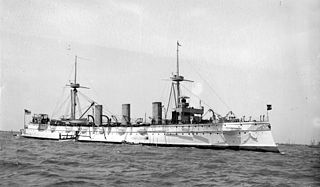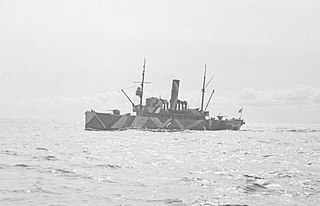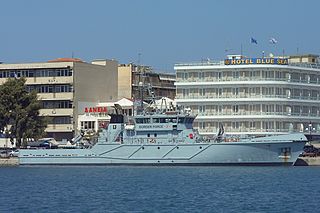
The Governor, Finnish: Maaherra, or Swedish: Landshövding, of a province of Finland headed the activities of the State Provincial Office, Finnish: Lääninhallitus, or Swedish: Länsstyrelse until the end of 2009, when the provinces were abolished. The governors were appointed by the President. Many former ministers including but not limited to Kaarlo Hillilä, Martti Miettunen, Hannele Pokka and Anneli Taina served as governors, since the post was regarded as prestigious enough for a retiring minister, but still politically neutral. The title of maaherra was also considered a personal title, such that once appointed, the title maaherra remained for life.

The Finnish Navy is one of the branches of the Finnish Defence Forces. The navy employs 2,300 people and about 4,300 conscripts are trained each year. Finnish Navy vessels are given the ship prefix "FNS", short for "Finnish Navy ship", but this is not used in Finnish language contexts. The Finnish Navy also includes coastal forces and coastal artillery.

The Croatian Navy is a branch of the Croatian Armed Forces. It was formed in 1991 from what Croatian forces managed to capture from the Yugoslav Navy during the breakup of Yugoslavia and Croatian War of Independence. In addition to mobile coastal missile launchers, today it operates 30 vessels, divided into the Navy Flotilla for traditional naval duties, and the Croatian Coast Guard. Five missile boats form Croatian fleet's main offensive capability.

Pohjanmaa is a former minelayer of the Finnish Navy. The sole member of her class, she was the flagship of the Finnish Navy as well as the largest naval ship in service in Finland until 2013. The ship has a Finnish-Swedish ice class 1A so she can operate all year round. During a crisis, the main task for Pohjanmaa would have been mine laying and acting as a command ship. She also acted as a school ship for the Naval Academy cadets. Part of their training includes an annual cruise abroad.

SMS Deutschland was the second and final ship of the Kaiser-class ironclads; SMS Kaiser was her sister ship. Named for Germany, the ship was laid down in the Samuda Brothers shipyard in London in 1872. The ship was launched in September 1874 and commissioned into the German fleet in July 1875. Deutschland mounted a main battery of eight 26 cm (10.2 in) guns in a central battery amidships. She was the last capital ship built for the German Navy by a foreign ship-builder; all subsequent ships were built in Germany.

SMS König Wilhelm was an armored frigate of the Prussian and later the German Imperial Navy. The ship was laid down in 1865 at the Thames Ironworks shipyard in London, originally under the name Fatih for the Ottoman Empire. She was purchased by Prussia in February 1867, launched in April 1868, and commissioned into the Prussian Navy in February 1869. The ship was the fifth ironclad ordered by the Prussian Navy, after Arminius, Prinz Adalbert, Friedrich Carl, and Kronprinz. She was built as an armored frigate, armed with a main battery of sixteen 24 cm (9.4 in) and five 21 cm (8.3 in) guns; several smaller guns and torpedo tubes were added later in her career.

Crichton-Vulcan is an abandoned shipyard in Turku, Finland, that once formed the cornerstone of the Finnish shipbuilding industry. The shipyard is best known for the World War II coastal defence ships and submarines it produced.

Katanpää-class mine countermeasure vessels are a class of three multipurpose mine countermeasure vessels (MCMV) ordered by the Finnish Navy. The nearly 250 million euro contract was awarded to the Italian shipyard Intermarine S.p.A. in 2006. Initially, all three vessels were scheduled to be delivered by 2014 and the class was expected to achieve operational readiness by 2015, but there have been various delays and the last vessel was handed over to the Finnish Navy in November 2016.

The Military Museum of Finland is the central museum of the Finnish Defence Forces and the national special museum of military history. It is located in Helsinki and it is part of the Finnish National Defence University. In 2018, the Military Museum's exhibitions in Suomenlinna had around 131,000 visitors. The most popular exhibition is the submarine Vesikko, visited by around 50,000 people annually. Military Museum's exhibitions in Suomenlinna are located at Manege and Artillery Maneage.

SMS Kaiserin Augusta was a unique protected cruiser, built for the German Kaiserliche Marine in the early 1890s. Named for Empress Augusta, who died in January 1890, she was laid down in 1890, launched in January 1892, and completed in November of that year. Owing to budgetary restrictions, Kaiserin Augusta was designed to fill both fleet scout and colonial cruiser roles. The ship was initially armed with a main battery of four 15 cm (5.9 in) and eight 10.5 cm (4.1 in) guns, which by 1896 was replaced with twelve new model 15 cm guns. She was the first ship in the German Navy to feature a three-shaft propeller arrangement.

SMS Beowulf was the second vessel of the six-member Siegfried class of coastal defense ships (Küstenpanzerschiffe) built for the German Imperial Navy. Her sister ships were Siegfried, Frithjof, Heimdall, Hildebrand, and Hagen. Beowulf was built by the AG Weser shipyard between 1890 and 1892, and was armed with a main battery of three 24-centimeter (9.4 in) guns. She served in the German fleet throughout the 1890s and was rebuilt in 1900 - 1902. She served in the VI Battle Squadron after the outbreak of World War I in August 1914, but saw no action. Beowulf was demobilized in 1915 and used as a target ship for U-boats thereafter. She was ultimately broken up for scrap in 1921.

Louhi was a Finnish Navy minelayer. The ship was originally constructed for the Imperial Russian Navy but was taken over by the Finns during the Russian Civil War. She had originally been named Voin, but was renamed as M1 in Finnish service. In 1936 she was given the more personal name Louhi, following the procedure of all other major ships in the Finnish navy.

Wilhelm Carpelan is a former Von Fersen-class transport boat. Built in 1915 for the Imperial Russian Navy, she was used as a transport boat and later a minesweeper by the Finnish Navy until 1977. After decommissioning, she was sold to private ownership and used as a pleasure boat. In 2013, Wilhelm Carpelan was donated to the collections of Forum Marinum, the maritime museum in Turku, Finland.

Forum Marinum is maritime museum located in Turku, Finland.
Uki Workboat Oy is a Finnish shipyard located in Uusikaupunki on the Western coast of Finland. The company specializes in small and medium-sized vessels for professional use, ranging from aluminium-hulled workboats to steel-hulled multipurpose ships and road ferries. The facilities consist of one 100-metre (330 ft) slipway and production halls where boats up to a length of 30 metres (98 ft) can be manufactured indoors.

HMC Protector is a Border Force (customs) cutter of the United Kingdom, formerly the Tavi of the Finnish Border Guard. She was built by Uki Workboat in Finland and was acquired by the UK Border Force in 2013. After a period of refit, the vessel was commissioned by the then Home Secretary Theresa May on 17 March 2014. Protector replaced HMC Sentinel, which was retired in 2013.

Sisu was a Finnish state-owned icebreaker. Built in 1939 at Wärtsilä Hietalahti Shipyard in Helsinki, she was one of the world's first diesel-electric icebreakers. In addition to icebreaking duties, she served as a submarine tender for the Finnish Navy during the summer months until the end of the Continuation War.

Oy Lehtoniemi Ab was a Finnish engineering and shipbuilding company, which operated in 1902–1930. The yard was located in Lehtoniemi, Joroinen in Mikkeli Province at lake Saimaa.

















